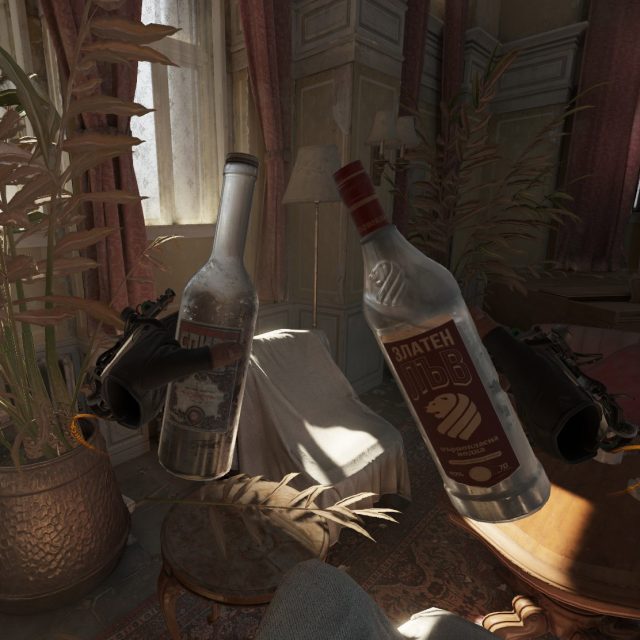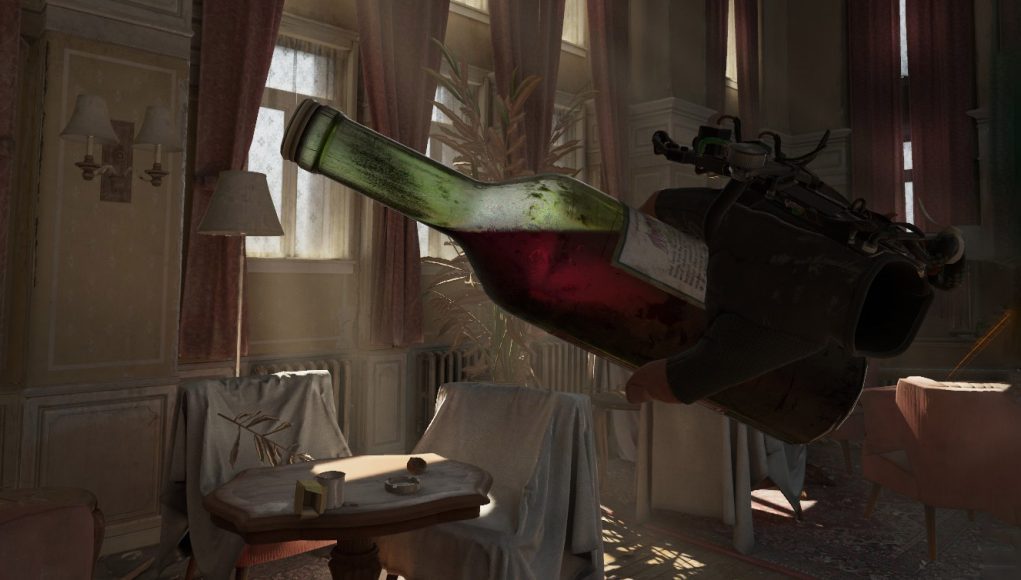Half-Life: Alyx was updated this week with an intriguing new feature: a new shader which simulates liquid inside of the game’s many bottles; a small but impressive immersive addition. The update also brought some bug fixes, new subtitle languages, and improved the game’s modding tools.
At launch, Half-Life: Alyx already included a cool immersive detail: many of the game’s small bottles and containers had an associated audio event which—when shaken—makes it sound like there’s actually something inside. Valve took this one step further in the Alyx 1.4 update, which was released this week, by actually rendering liquid inside many of the game’s bottles.
It might seem simple enough—after all, liquid simulations have been around for some time—but Alyx’s approach isn’t really a simulation as that would likely consume too many resources. Instead, the liquid is a shader which is made to look like a convincing simulation.
実際に見ると凄いわこれ pic.twitter.com/4LfrH8dJ4R
— skkn (@skknyuki) May 28, 2020
And it does a pretty darn good job, especially with the way that it interacts with environmental lighting. Valve visual effects developer, Matthew Wilde, said on Twitter that “this booze shader has been my lock-down hobby, required lots of research.”

The Half-Life: Alyx 1.4 update also added subtitles for eight new languages—Brazilian Portuguese, Czech, Hungarian, Italian, Polish, Portuguese, Ukrainian, Vietnamese—bringing the game’s total subtitle languages to 18.
The update also added new features, examples, and documentation to the Alyx Workshop modding tools:
- Enabled the Postprocessing Editor (Documentation)
- Added “Custom Character” example addon (Documentation)
- Added example maps for:
- Blind Zombie (a.k.a. Jeff)
- Hacking and Toner Puzzles
- Parked Vehicles and other Interactive Prefabs
- Visibility System (Documentation)
- Postprocessing Volumes (Documentation)
- Added core functionality required for Lua scripting and added some Alyx-specific script bindings for querying VR controller input and creating nav mesh paths from entity scripts
- Enabled live bone constraints in SFM, which can be baked/enabled as procedural bones, like cloth
The most interesting here is likely “core functionality required for Lua scripting,” which moves the modding tools one step closer to allowing modders to run custom scripts in the game, which should drastically expand the game’s modding possibilities.
The update also made a few bug fixes to the game and the Workshop tools. Check out the full patch notes here for details.







